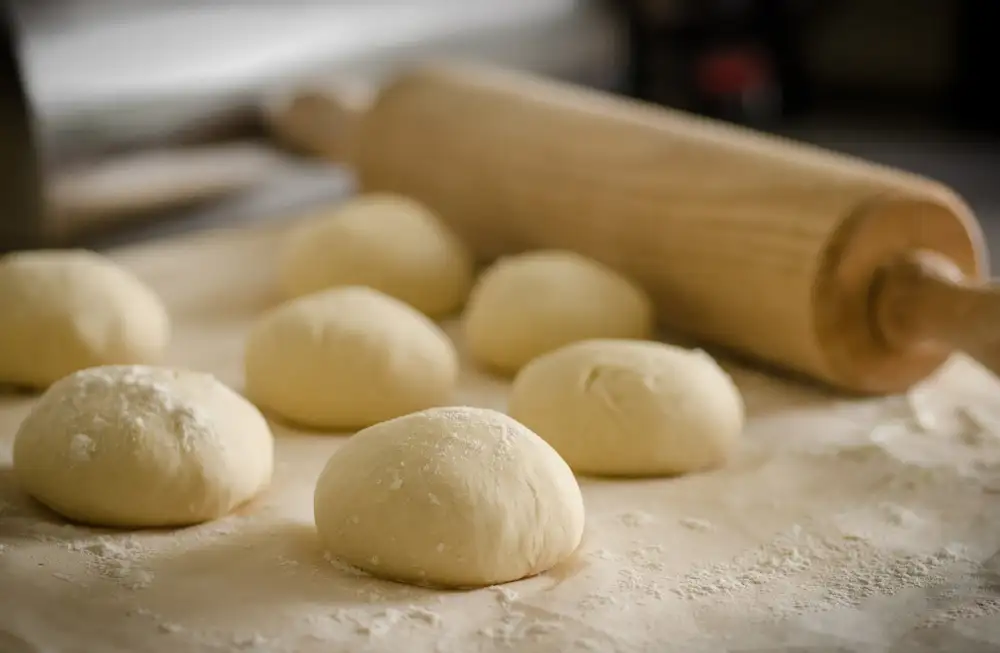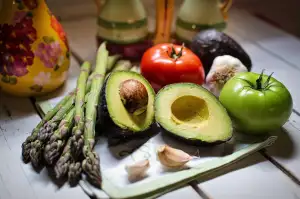Artisanal Bread Recipes: Unleash the Flavorful Magic of Homemade Dough

- Types of Bread: Exploring the Variety
- Basic Bread Recipe: Step-by-Step Guide
- Artisan Bread: Mastering the Craft
- Gluten-Free Bread: Catering to Dietary Needs
- Sweet Bread Recipes: Indulging in Delightful Treats
- Bread as a Meal Component: Creative Ideas for Breakfast, Lunch, and Dinner
- Bread in Different Cultures: Discovering Global Flavors
- Bread Baking Tips and Tricks: Enhancing Your Skills
Bread, a versatile staple food, has been a part of human civilization for centuries. From its humble beginnings as a simple mixture of flour and water, bread has evolved into an art form that delights the senses. Whether it's a crusty baguette, a soft sandwich loaf, or a sweet cinnamon roll, bread is a beloved food that transcends cultures and cuisines. Its ability to be transformed into endless variations makes it an essential ingredient in countless recipes. Join us on a culinary journey as we explore the magic of homemade bread and discover the endless possibilities it holds.
Types of Bread: Exploring the Variety
When it comes to bread, the options are endless. From crusty baguettes to fluffy brioche, there is a type of bread to suit every taste and occasion. Let's explore the variety of breads that you can create in your own kitchen.
1. White Bread: The classic staple, perfect for sandwiches or toast.
2. Whole Wheat Bread: Packed with nutrients and fiber, a healthier option.
3. Sourdough Bread: Made with a fermented starter, resulting in a tangy flavor.
4. Rye Bread: A dense and hearty bread with a distinct flavor.
5. Multigrain Bread: A combination of different grains for added texture and flavor.
6. Ciabatta: An Italian bread with a chewy interior and crispy crust, great for sandwiches.
7. Baguette: A long, thin French bread with a crisp crust and soft interior.
8. Focaccia: An Italian flatbread topped with herbs and olive oil, perfect for dipping.
These are just a few examples of the vast array of breads you can experiment with. Each type has its own unique characteristics and uses in various cuisines around the world. So go ahead and explore the wonderful world of bread baking!
Basic Bread Recipe: Step-by-Step Guide
Making homemade bread is a rewarding experience that allows you to savor the delicious aroma and taste of freshly baked bread. Follow this simple step-by-step guide to create your own basic bread:
1. Gather the ingredients: You will need 3 cups of all-purpose flour, 2 teaspoons of instant yeast, 1 teaspoon of salt, 1 tablespoon of sugar, and 1 cup of warm water.
2. Mix the dry ingredients: In a large bowl, combine the flour, yeast, salt, and sugar. Mix well to ensure even distribution.
3. Add the water: Gradually pour in the warm water while stirring with a wooden spoon or your hands until a shaggy dough forms.
4. Knead the dough: Transfer the dough onto a lightly floured surface and knead for about 10 minutes until it becomes smooth and elastic.
5. First rise: Place the dough in a greased bowl and cover it with a clean kitchen towel or plastic wrap. Let it rise in a warm place for about 1 hour or until doubled in size.
6. Shape the loaf: Punch down the risen dough to release any air bubbles. Shape it into a loaf by folding the edges towards the center and rolling it tightly.
7. Second rise: Place the shaped loaf on a baking sheet lined with parchment paper or in a greased loaf pan. Cover it again and let it rise for another 30-45 minutes until puffy.
8. Preheat and bake: Preheat your oven to 425°F (220°C). If desired, you can brush the top of the loaf with melted butter or egg wash for added flavor and shine. Bake for approximately 25-30 minutes or until golden brown.
9. Cool and enjoy: Once baked, remove from the oven and let it cool on a wire rack before slicing into your freshly baked bread. Serve warm with butter or your favorite spreads.
With this basic bread recipe, you can create a versatile foundation for various bread creations. Experiment with different flavors and add-ins to make it your own. Happy baking!
Artisan Bread: Mastering the Craft
Artisan bread is more than just a loaf of bread; it is an art form. With its rustic appearance and complex flavors, artisan bread is a testament to the skill and craftsmanship of the baker. Mastering the craft of artisan bread requires patience, practice, and attention to detail. From selecting the finest ingredients to meticulously shaping and scoring the dough, every step in the process contributes to creating a truly exceptional loaf. The slow fermentation process used in artisan bread baking allows for the development of rich flavors and a chewy texture that is unmatched by store-bought bread. Whether it's a crusty baguette or a hearty sourdough boule, mastering the craft of artisan bread will elevate your baking skills to new heights. So roll up your sleeves, dust off your apron, and get ready to embark on a delicious journey into the world of artisan bread-making.
Gluten-Free Bread: Catering to Dietary Needs
For those with gluten sensitivities or celiac disease, enjoying bread can be a challenge. However, with the rise in popularity of gluten-free diets, there are now plenty of options available to cater to these dietary needs.
Gluten-free bread is made using alternative flours such as rice flour, almond flour, or tapioca flour. These flours provide a similar texture and taste to traditional bread, ensuring that those who cannot consume gluten can still enjoy the pleasure of a warm slice.
When baking gluten-free bread, it's important to use xanthan gum or guar gum as binders. These ingredients help mimic the elasticity that gluten provides in regular bread dough. Additionally, adding extra moisture to the dough can prevent it from becoming dry and crumbly.
Experimenting with different gluten-free flours and ingredients can yield delicious results. From savory rosemary and olive bread to sweet cinnamon raisin loaf, there are endless possibilities for creating flavorful gluten-free breads.
By catering to dietary needs with gluten-free options, you can ensure that everyone at your table can indulge in the magic of homemade bread.
Sweet Bread Recipes: Indulging in Delightful Treats
When it comes to satisfying our sweet tooth, bread can be a surprising and delicious choice. Sweet bread recipes offer a delightful twist on traditional loaves, incorporating flavors like chocolate, fruits, and spices. From classic cinnamon rolls to decadent chocolate babka, these treats are perfect for breakfast or as an indulgent dessert.
One popular sweet bread recipe is the cinnamon swirl bread. The combination of soft, fluffy dough and the warm aroma of cinnamon makes this bread irresistible. With each bite, you'll experience the perfect balance of sweetness and spice.
For those who love fruity flavors, a berry-filled sweet bread is a must-try. Whether it's blueberries, raspberries, or strawberries, these juicy fruits add bursts of freshness to every slice. Drizzle some glaze on top for an extra touch of sweetness.
If you're a fan of chocolate, then chocolate babka is your ultimate treat. This rich and buttery bread is swirled with layers of luscious chocolate filling. Each slice reveals a beautiful marbled pattern that will make your mouth water.
Don't forget about the classic banana bread! This moist and flavorful loaf is perfect for using up overripe bananas. Add some walnuts or chocolate chips for an extra crunch or gooey surprise.
Sweet bread recipes are not only delicious but also versatile. They can be enjoyed as part of a leisurely brunch spread or served as an afternoon snack with a cup of tea or coffee. These delightful treats are sure to satisfy any craving for something sweet.
So why not unleash your creativity in the kitchen and indulge in these delightful sweet bread recipes? They will surely become favorites among family and friends alike.
Bread as a Meal Component: Creative Ideas for Breakfast, Lunch, and Dinner
Bread is not just a side dish; it can be the star of any meal. For breakfast, try a classic avocado toast or a hearty egg and cheese sandwich. At lunchtime, make a delicious panini with your favorite fillings or enjoy a comforting bowl of soup with crusty bread on the side. For dinner, serve up homemade pizza or create mouthwatering sandwiches using freshly baked bread. With its versatility and ability to complement any dish, bread truly shines as an essential component in every meal.
Bread in Different Cultures: Discovering Global Flavors
Bread is a universal food that transcends borders and cultures, each with its own unique flavors and techniques. From the crusty baguettes of France to the soft naan bread of India, exploring bread in different cultures opens up a world of flavors. In Italy, focaccia is a popular choice, topped with olive oil and herbs. In Mexico, tortillas are a staple, used for tacos and quesadillas. In Ethiopia, injera is a sourdough flatbread served with stews. Each culture brings its own twist to breadmaking, showcasing the diversity and creativity in global cuisine.
Bread Baking Tips and Tricks: Enhancing Your Skills
1. Use high-quality ingredients: The quality of your bread starts with the ingredients you use. Opt for fresh flour, yeast, and salt to ensure the best results.
2. Measure accurately: Baking is a science, so precise measurements are crucial. Invest in a good kitchen scale and measure your ingredients by weight for consistent results.
3. Knead properly: Kneading develops gluten, giving bread its structure and texture. Follow the recipe instructions for kneading time and technique to achieve the perfect dough consistency.
4. Proofing temperature matters: Yeast needs warmth to activate, but too much heat can kill it. Find a warm spot in your kitchen for proofing, around 75-85°F (24-29°C), to ensure proper fermentation.
5. Create steam in the oven: Steam helps create a crispy crust on your bread. Place a pan of hot water in the oven or spritz water onto the dough before baking to achieve that desired crust.
6. Let it cool completely: It's tempting to slice into freshly baked bread, but allowing it to cool completely on a wire rack ensures even distribution of moisture and prevents a gummy texture.
7. Experiment with flavors and textures: Don't be afraid to add herbs, spices, nuts, or dried fruits to your bread dough for added flavor and texture variations.
8. Practice patience: Bread baking requires time and patience. Allow enough time for rising, proofing, and baking according to the recipe instructions for optimal results.
9. Keep practicing: Like any skill, bread baking improves with practice. Don't get discouraged if your first few loaves aren't perfect; keep trying different recipes and techniques until you find what works best for you.
10. Share your creations: Bread baking is meant to be shared! Share your homemade loaves with friends and family or join online baking communities to exchange tips and inspiration.
In conclusion, bread truly is the heart and soul of the kitchen. Its versatility, variety, and ability to bring people together make it an essential part of our culinary experiences. Whether you're a novice baker or a seasoned pro, there's always something new to discover and create with bread. So unleash your creativity, experiment with different flavors and techniques, and let the magic of homemade dough fill your kitchen with warmth and delicious aromas. Embrace the art of breadmaking and embark on a culinary adventure that will delight both your taste buds and your soul.
Published: 29. 12. 2023
Category: Recipes



